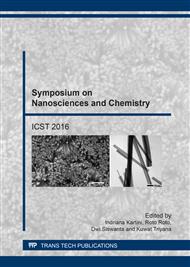[1]
U.K. Mudali, T.M. Shridar and B. Raj, Corrosion of Bio Implants, Sadhana 28(3-4) (2003) 601-637.
Google Scholar
[2]
C.C. Brown, M. Mcqueen and P. Tornetta, Trauma 1st edition, Orthopaedic Surgery Essentials, series editor Paul Tornetta III and Thomas A. EinhornLippincott Williams & Wilkins Philadelphia USA, (2006).
Google Scholar
[3]
T.P. Rüedi and W.M. Murphy, AO Principles of Fracture Management, Thieme, Stuttgart-New York, (2000).
Google Scholar
[4]
B. Helgason, H. Pálsson, T.P. Rúnarssona, L. Frossard and M. Viceconti, Risk of failure during gait for direct skeletal attachment of a femoral prosthesis: A finite element study, Med. Eng. Phys. 31 (2009) 595–600.
DOI: 10.1016/j.medengphy.2008.11.015
Google Scholar
[5]
A.O. Ogbemudia and P.F.A. Umebese, Implant failure in osteosynthesis of fracture of long bones, J. Biomed. Sci. 5(2) (2006) 75-78.
Google Scholar
[6]
X.H. Chen, J. Lu, L. Lu and K. Lu, Tensile properties of a nanocrystalline 316L austenitic stainless steel, Scr. Mater. 52 (2005) 1039–1044.
DOI: 10.1016/j.scriptamat.2005.01.023
Google Scholar
[7]
N.J. Hallab, J.J. Jacobs and J.L. Katz, Application of Materials in Medicine, Biology, and Artificial Organs: Orthopaedic Applications, Biomaterials Science, Elsevier Academic Press, Amsterdam, (2004).
Google Scholar
[8]
A.S. Argon, Strengthening Mechanism in Crystal Plasticity, Oxford University Press, New York, (2008).
Google Scholar
[9]
O. Takakuwa , Y. Kawaragi and H. Soyama, Estimation of the Yield Stress of Stainless Steel from the Vickers Hardness Taking Account of the Residual Stress, J Surf Eng Mater Adv Technol. 3 (2013) 262–268.
DOI: 10.4236/jsemat.2013.34035
Google Scholar
[10]
J.T. Maximov, G.V. Duncheva and Kuzmanov, Modeling of hardening behavior of cold expanded holes in medium-carbon steel, J. Constr. Steel Res. 64 (2008) 161–167.
DOI: 10.1016/j.jcsr.2007.07.005
Google Scholar
[11]
J.O. Bunch and M.R. Mitchell, Residual Stress Effects on Fatigue and Fracture Testing and Incorporation of Results into Design, ASTM Stock Number: STP1497, (2007).
DOI: 10.1520/stp1497-eb
Google Scholar
[12]
N. Huber and J. Heerens, On the effect of a general residual stress state on indentation and hardness testing, Acta Mater. 56 (2008) 6205–6213.
DOI: 10.1016/j.actamat.2008.08.029
Google Scholar
[13]
Z.S. Ma, Y.C. Zhou, S.G. Long and C. Lu, Residual stress effect on hardness and yield strength of Ni thin film, Surf Coat Technol. 207 (2012) 305–309.
DOI: 10.1016/j.surfcoat.2012.07.002
Google Scholar
[14]
J.B. Brunskin, Classes of materials used in medicine: Metals, in Biomaterials Science, An Introduction to Materials in Medicine, edited by B.D. Ratner, A.S. Hoffman, F.J. Schoen and J.E. Lemons, Academic Press, USA, (1996).
Google Scholar


